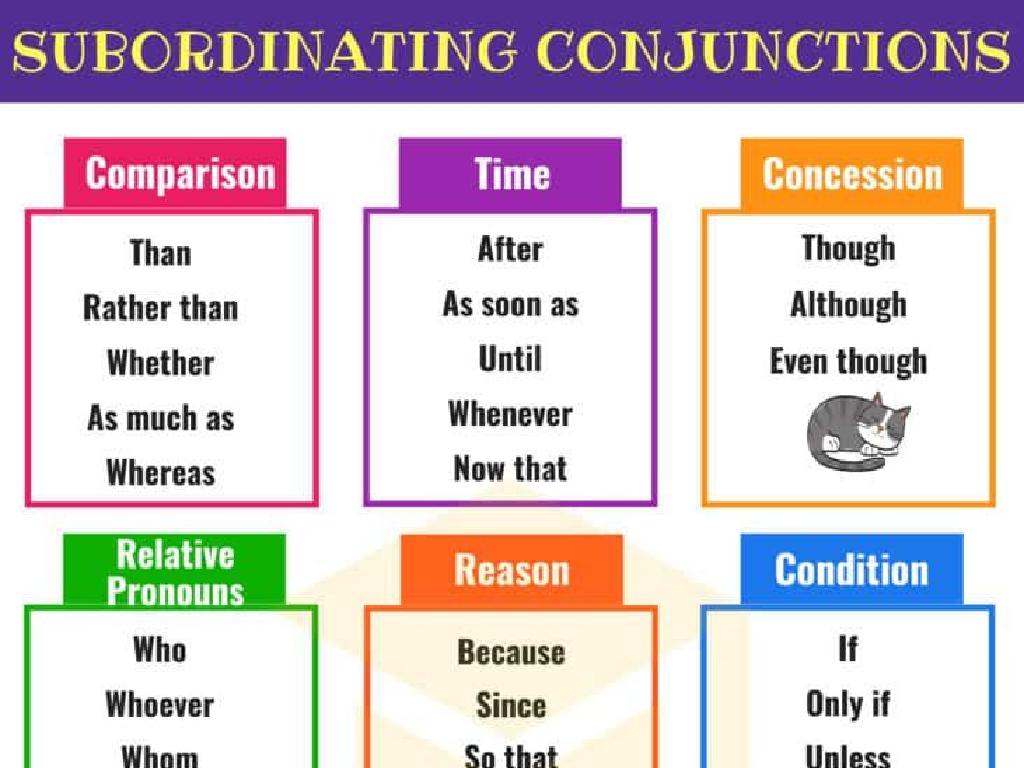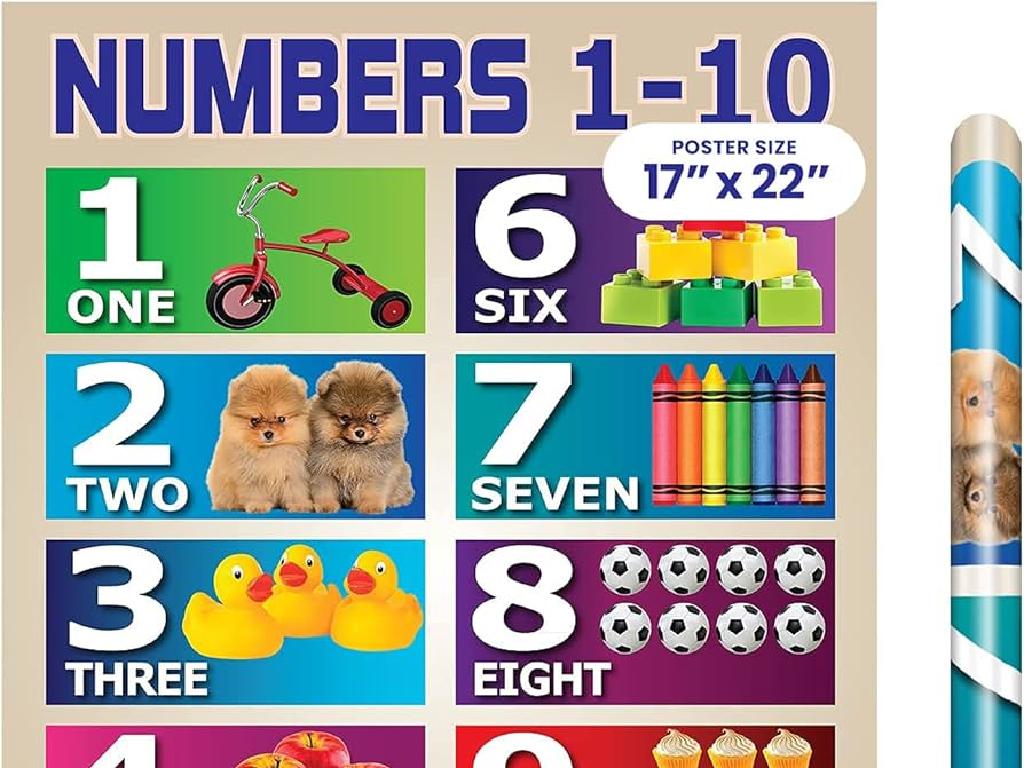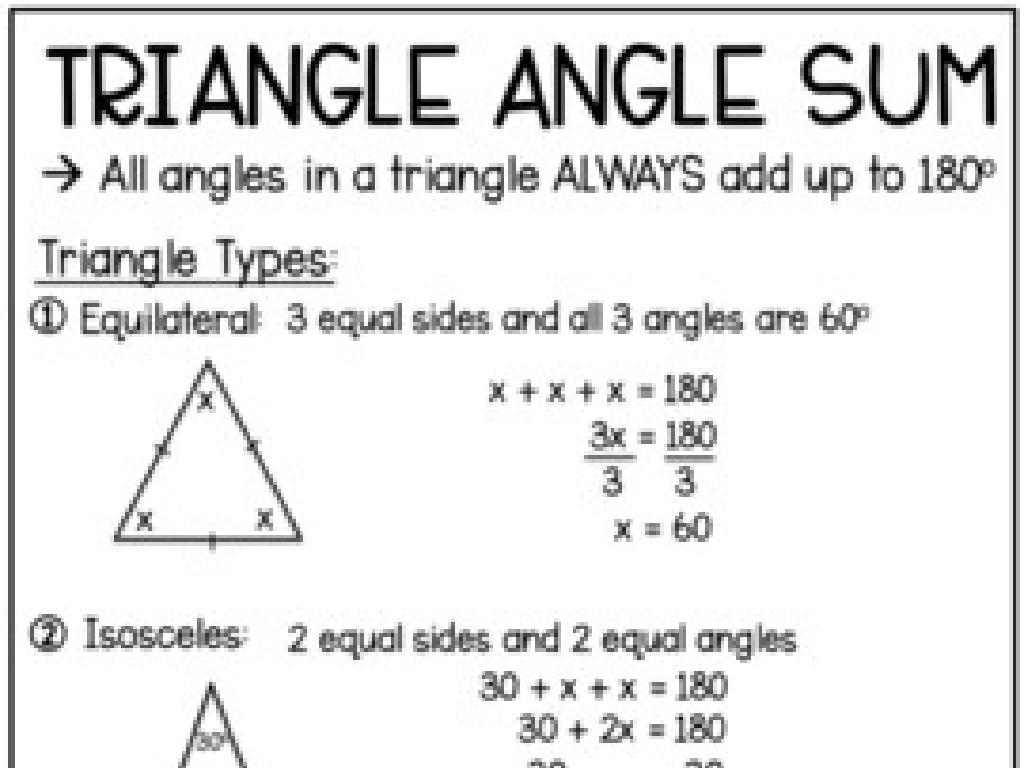Read A Letter-Number Grid
Subject: Social studies
Grade: Third grade
Topic: Geography
Please LOG IN to download the presentation. Access is available to registered users only.
View More Content
Today’s Adventure: Reading a Letter-Number Grid!
– Maps and their purpose
– Maps help us locate places and navigate.
– The role of grids in geography
– Grids help us find exact spots on a map quickly.
– How to read a grid
– Match letters on one side with numbers on the other to find a place.
– Practice with a letter-number grid
– We’ll use a sample grid to locate different places together.
|
This slide introduces students to the concept of letter-number grids as used in geography. Begin by discussing the general purpose of maps and how they are essential tools for understanding our world. Explain that grids are a system used to break down space into manageable parts, making it easier to pinpoint locations. Teach students how to read a grid by matching the letters on one axis with the numbers on the other to find specific spots. Conclude with a hands-on activity where students practice using a letter-number grid to locate places, reinforcing their understanding of the grid system. This activity will help students develop spatial awareness and map-reading skills.
Understanding Grids on Maps
– What is a map grid?
– A grid has vertical and horizontal lines that cross
– Grids help locate places
– Like a treasure map, grids guide us to a spot quickly
– Each grid square is unique
– Think of it as a house address for every part of the map
– Practice finding locations
|
This slide introduces students to the concept of grids on maps, an essential tool for geographic literacy. Begin by explaining that a grid is composed of intersecting vertical and horizontal lines, much like a checkerboard. Emphasize that grids make it easier to find specific places on a map by breaking it down into smaller, more manageable sections. Each square or ‘house’ on the grid has a unique ‘address’ that helps us pinpoint locations accurately. To reinforce learning, engage students in an activity where they use a simple grid map to find locations, such as landmarks or cities, using the grid addresses. This practical application will help solidify their understanding of how grids function on maps.
Understanding the Parts of a Grid
– Rows labeled with letters
– Rows are horizontal, like A, B, C…
– Columns labeled with numbers
– Columns are vertical, like 1, 2, 3…
– Intersection is called a cell
– A cell is where a row and column meet
|
This slide introduces students to the basic components of a letter-number grid, which is a foundational tool in geography for locating places on a map. Explain that rows run horizontally and are labeled with letters of the alphabet, while columns run vertically and are labeled with numbers. Emphasize that the point where a row and a column intersect is called a cell, and it’s similar to playing a game of battleship where you call out a letter and a number to find a location. Use a simple grid drawn on the board or a handout to demonstrate this concept. Have students practice by calling out coordinates and identifying the corresponding cell on their own grid handouts.
Reading a Letter-Number Grid
– Start with the row letter
– Rows are labeled with letters (A, B, C, …)
– Move to the column number
– Columns are labeled with numbers (1, 2, 3, …)
– Find the meeting point
– The grid intersection points to a place
– Discover the location
|
This slide is designed to teach third-grade students the basics of reading a letter-number grid, which is a foundational skill in geography. Start by explaining that grids are used to find specific locations on maps. Show them that each row is labeled with a letter and each column with a number. To find a location, they should first locate the row letter, then move across to the column number. Where these two meet on the grid is the exact spot they’re looking for. Use a simple grid with clear labels and a few example locations to demonstrate this concept. Encourage students to practice with a classroom activity where they use a grid to find locations on a map.
Let’s Practice Reading Grids!
– Understand grid addresses
– Locate A-4 on the class map
– Find where the letter A and number 4 meet
– Discuss your findings
– What place or object did you find at A-4?
– Share with the class
|
This slide is for a class activity to help students practice reading a letter-number grid. Start by explaining how grid addresses work, with letters representing rows and numbers representing columns. Then, ask the students to find the grid address A-4 on a map you have provided in class. Once they locate A-4, have them write down or discuss what they find at that location. Encourage them to share their findings with the class to foster a collaborative learning environment. This activity will help students become familiar with using grids to find locations, an essential skill in geography. Prepare to offer guidance and ensure each student understands the concept before moving on.
Using Grids in Real Life
– Grids in maps and games
– City maps and game boards like chess use grids for organization.
– Grids help with directions
– Grids make it easier to explain how to get somewhere.
– Where else are grids found?
– Can you find grids in a zoo or a parking lot?
– Understanding grid applications
|
This slide aims to help students recognize the practical applications of grids in everyday life. Begin by explaining how grids are used in city maps to locate places and in games to organize space. Emphasize how grids allow us to give and follow clear directions. Ask students to think of other places where grids are used, prompting them to consider their own experiences, like navigating a zoo or finding a car in a parking lot. This will help them understand the concept of grids beyond the classroom and see their value in organizing information and aiding in spatial understanding.
Class Activity: Create Your Own Grid Map!
– Draw a map of your neighborhood
– Overlay your map with a grid
– Use a ruler to draw evenly spaced lines
– Label the grid with letters and numbers
– For example, columns: A, B, C; rows: 1, 2, 3
– Practice finding places using the grid
– Trade maps with a friend and locate their favorite spot
|
This activity is designed to help students understand how to read and create a letter-number grid, which is a foundational skill in geography. Students will start by drawing a simple map of an area they are familiar with, such as their neighborhood or an imaginary place. They will then add a grid overlay with evenly spaced horizontal and vertical lines, and label these lines with letters for columns and numbers for rows. After completing their maps, students will exchange them with classmates and attempt to find specific locations by using the grid references. This hands-on activity not only reinforces the concept of grid referencing but also encourages peer learning and collaboration. Provide students with examples of grid maps and guide them through the process of creating and reading grid references. Ensure that each student has the necessary materials, such as paper, pencils, and rulers, and provide assistance as needed.





